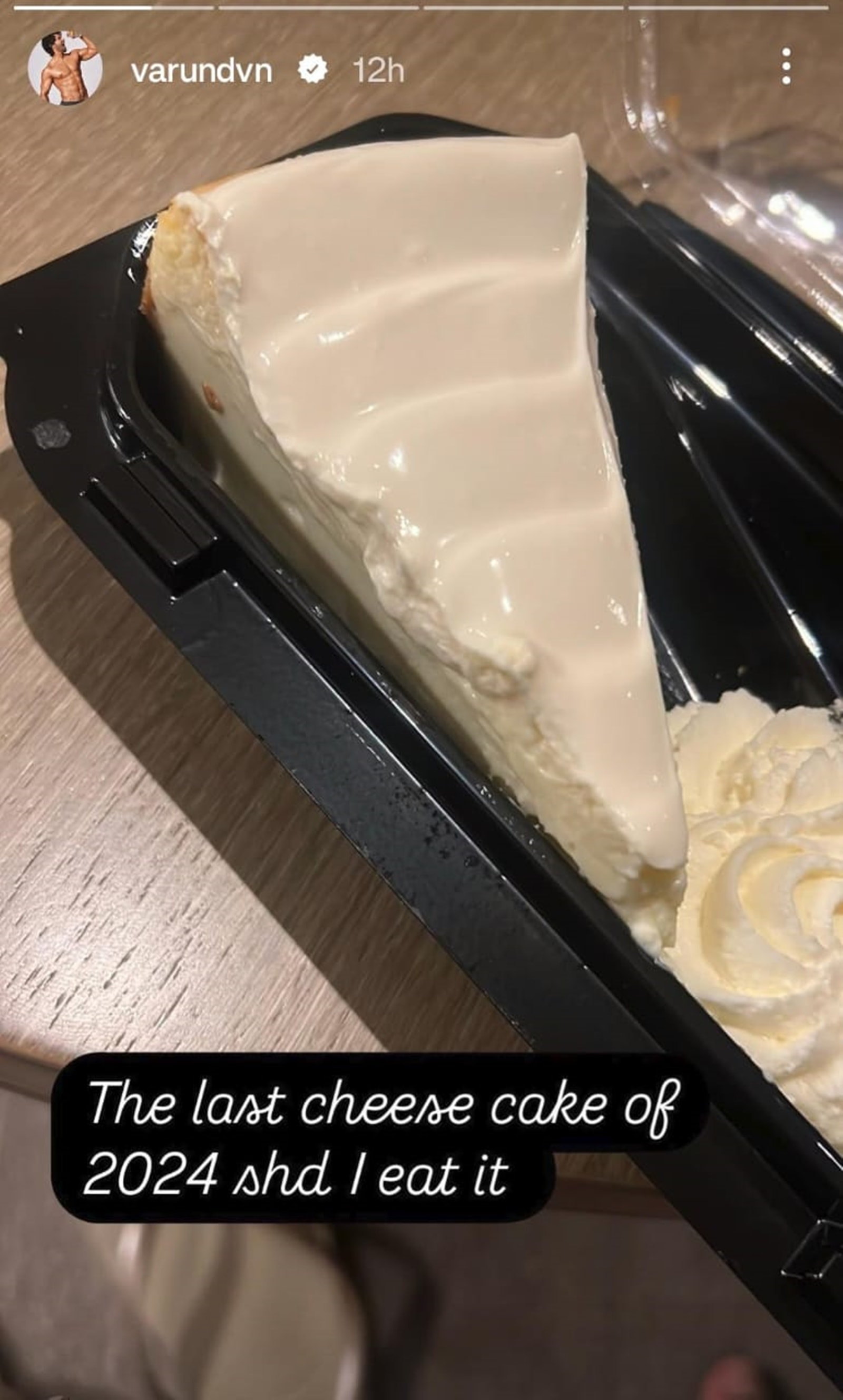📣 For more lifestyle news, click here to join our WhatsApp Channel and also follow us on Instagram
Varun Dhawan savours his ‘last cheesecake of 2024’ on New Year’s Eve: Uncovering history and global popularity of the dessert
Cheesecake can be traced back to ancient Greece, where it was made using simple ingredients like cheese, honey, and wheat.
 Do you like cheesecakes? (Source: Freepik)
Do you like cheesecakes? (Source: Freepik)Cheesecake is a popular dessert with a rich history that spans centuries and cultures. Its universal appeal lies in the ability to balance richness with a hint of tang, the many variations, and its status as a comfort food and a gourmet dessert. Ahead of New Year’s Eve, Varun Dhawan shared a picture on Instagram of a slice of cheesecake he planned to enjoy as the year draws to a close. “The last cheese cake of 2024 should I eat it” captioned the Bollywood actor.
Curious, indianexpressc.om decided to found out what makes cheesecakes popular and learn about the history of this decadent dessert.
Celebrity chef Ananya Banerjee said that the cheesecake’s popularity lies in the fact that it is highly adaptable, with infinite flavour combinations and styles to suit various palates. “Its smooth, velvety consistency makes it indulgent and satisfying. It pairs well with toppings like fresh fruits, nuts, caramel, or chocolate. Closer home, our own Chenna Poda from Odisha finds uncanny similar to the classic cheesecake,” she said.
 Varun Dhawan’s Instagram story (Source: @varundvn/Instagram)
Varun Dhawan’s Instagram story (Source: @varundvn/Instagram)
History of cheesecake
Cheesecake can be traced back to ancient Greece, where it was made using simple ingredients like cheese, honey, and wheat. It was served to athletes during the first Olympic Games in 776 BCE as a source of energy. The Romans adopted the recipe and enhanced it by adding eggs. They called it “placenta” or “libum” and used it in religious offerings. Cheesecake recipes spread throughout Europe, evolving with regional ingredients and techniques. Cottage cheese, curd cheese, and cream were common bases.
The creamy cheesecake we know today began taking shape in the 18th century, especially in Eastern Europe, where soft cheeses like quark were used. In 1872, American dairy farmers accidentally created cream cheese, which became a staple ingredient in modern cheesecake recipes.
Popular kinds of cheesecake
1. New York-style cheesecake: Known for its dense, rich texture and slight tang, this variety uses cream cheese, heavy cream, and often a graham cracker crust.
2. Chicago-style cheesecake: Lighter and creamier inside, this has a firm exterior, and is often baked with a butter-based crust.
3. Italian cheesecake: Uses ricotta or mascarpone cheese instead of cream cheese, giving it a lighter and more textured profile.
4. Japanese cheesecake: Also called “soufflé cheesecake,” it’s airy and fluffy, combining the creaminess of cheesecake with the lightness of a soufflé.
5. No-bake cheesecake: Made without baking, it relies on gelatin or refrigeration to set. It is lighter and quicker to prepare.
6. Basque burnt cheesecake: A modern favourite from Spain, it’s crustless with a caramelised, burnt top and a creamy center.
7. German Käsekuchen: Made with quark cheese, it’s less sweet and has a firmer texture than American-style cheesecakes.
8. Flavoured variations: Cheesecake has been adapted to feature diverse flavours such as chocolate, red velvet, pumpkin, mango, matcha, and key lime.
📣 For more lifestyle news, click here to join our WhatsApp Channel and also follow us on Instagram




- 01
- 02
- 03
- 04
- 05























